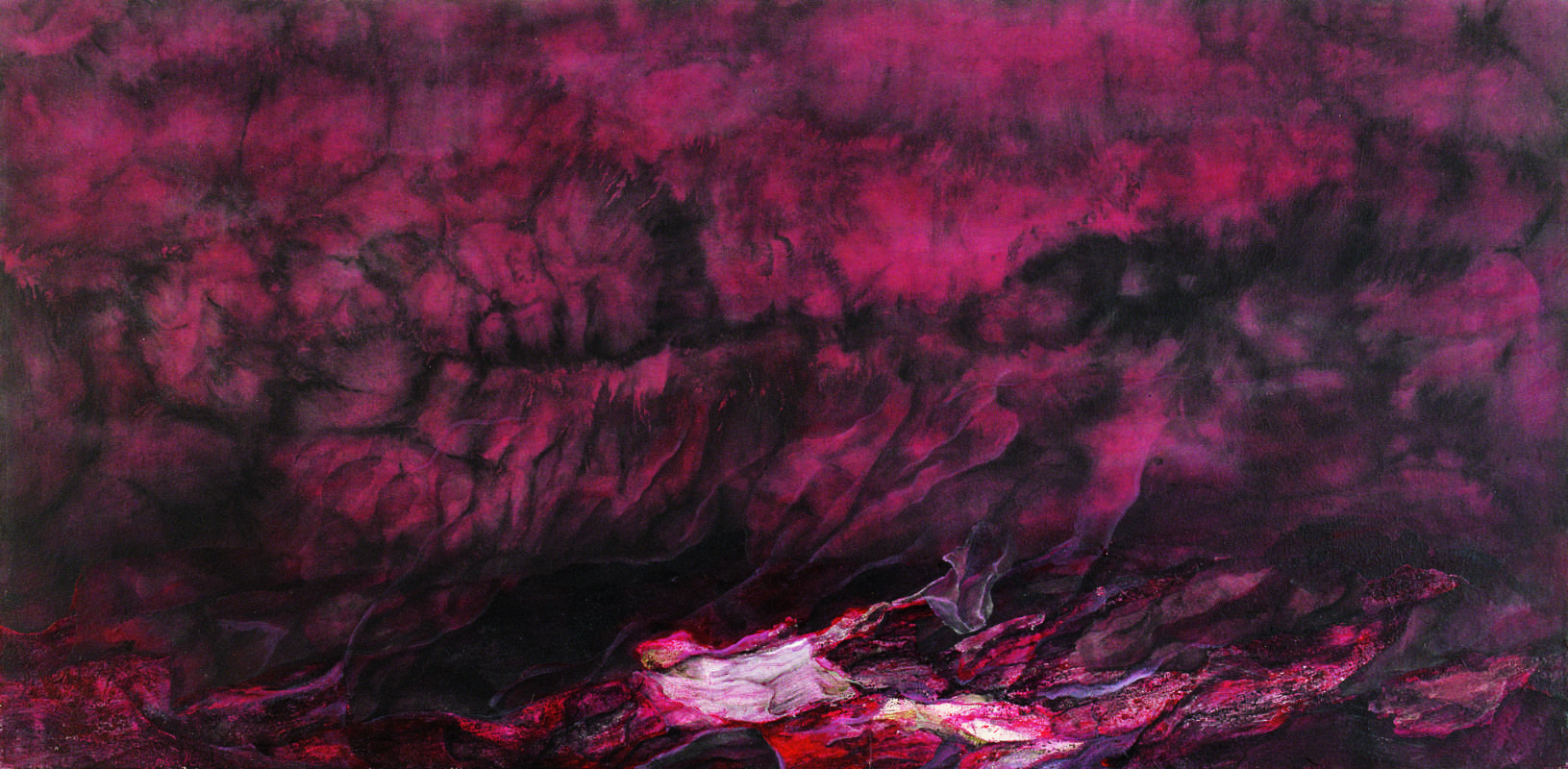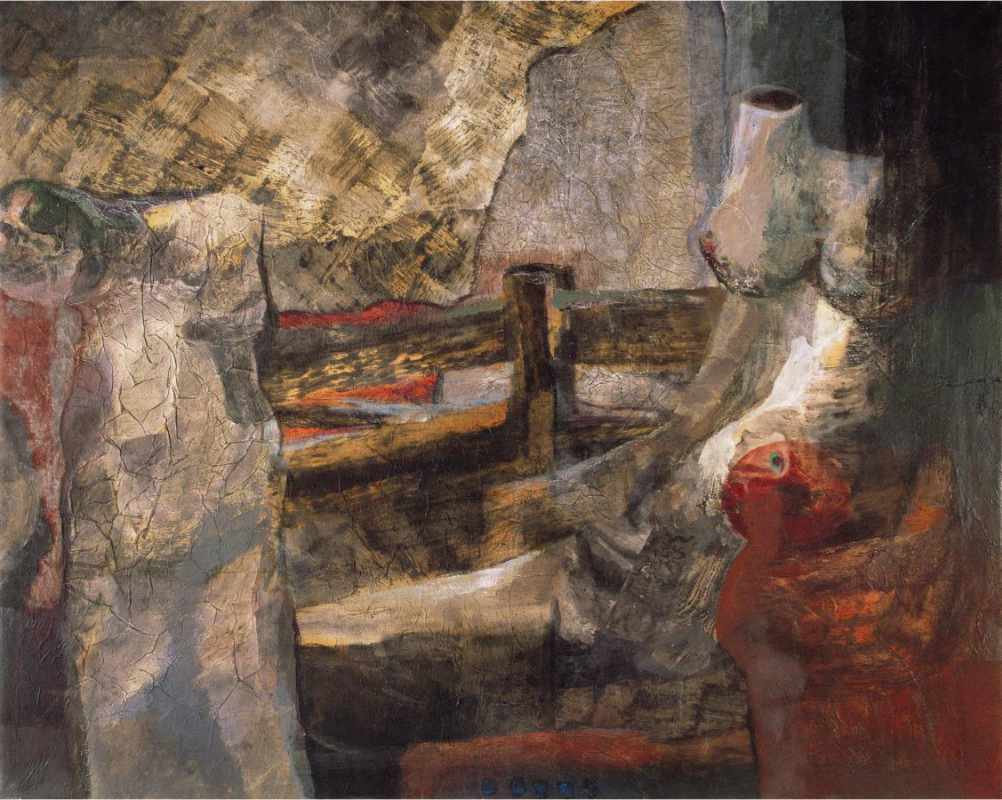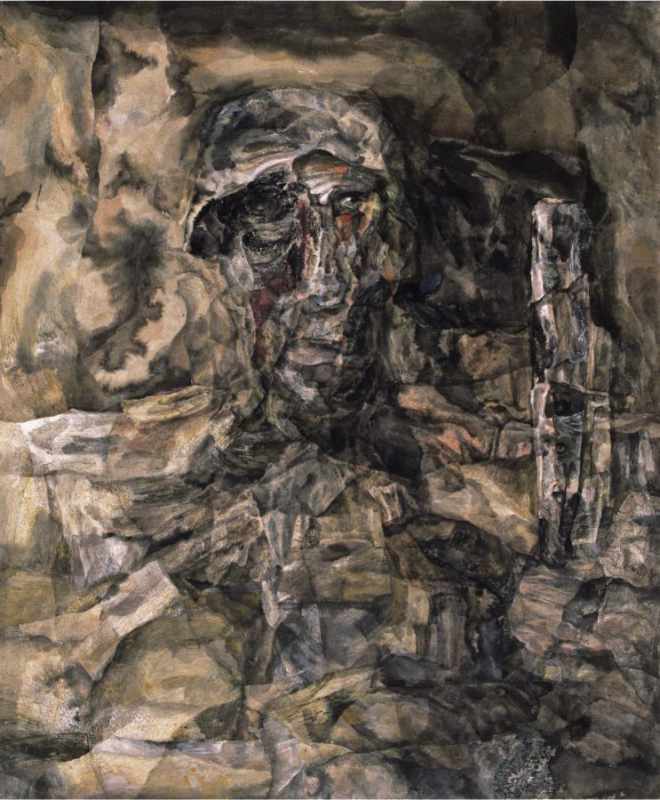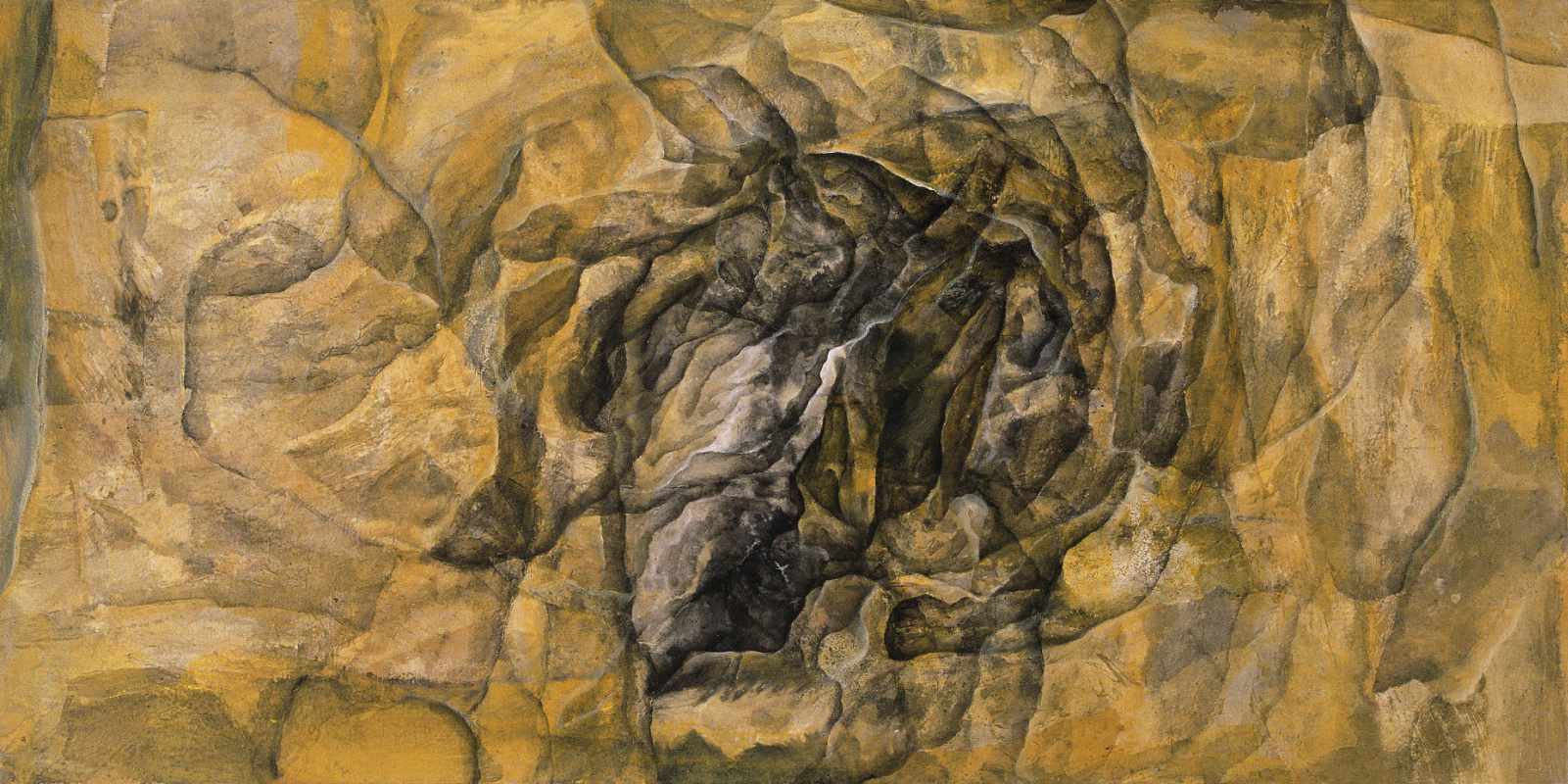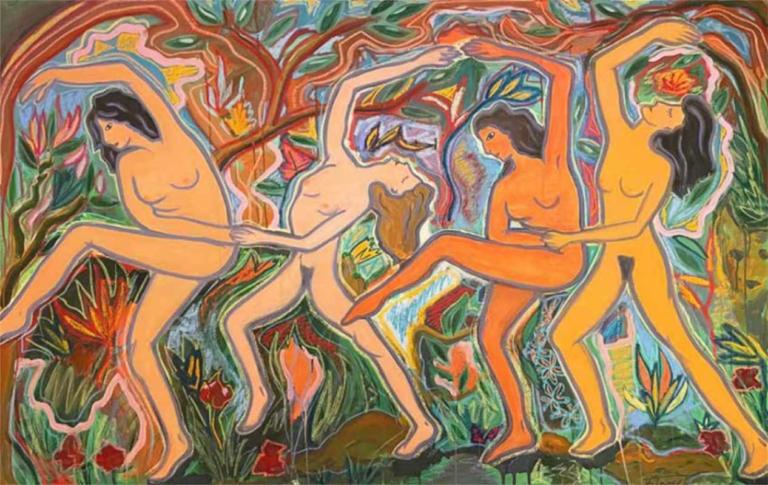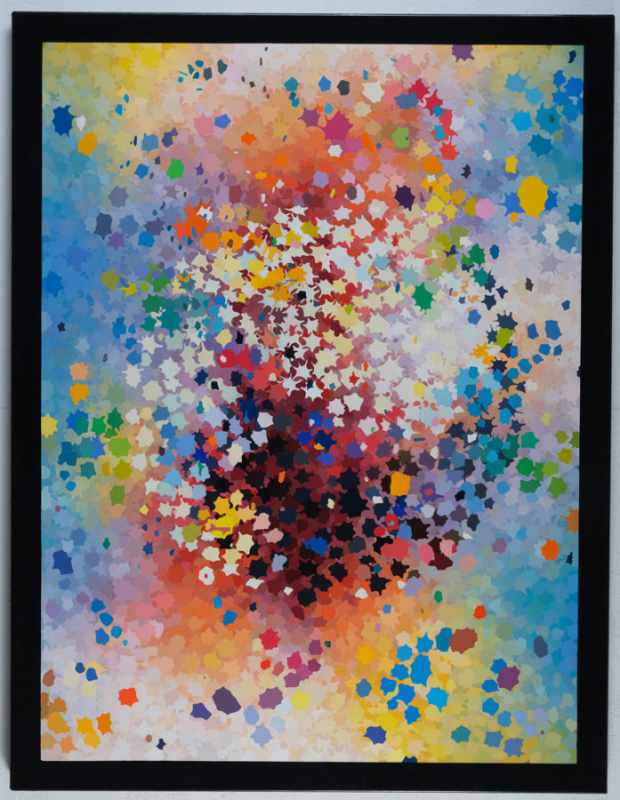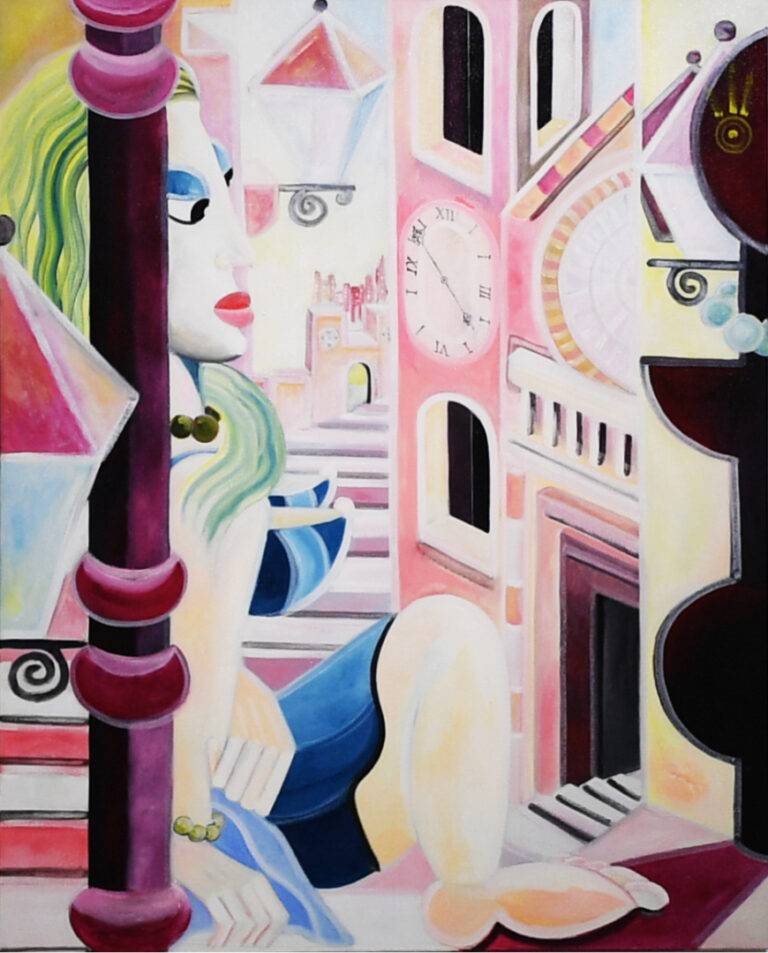Jiang Haicang is the master of our oriental culture, he integrated calligraphy, seal carving, Chinese painting, literature and the great and profound Yiology (philosophy of changes) together, and built his unprecedented style, which is called Yi Expressionism.
Yi Expressionism is originally from the Book of Changes, and the symbol of the Eight Diagrams from the Book of Changes and the inscriptions on the bones of Yin Ruins implied that the Chinese ancestors used to seek glory through divination and cosmology, and the glory is the transmission and implication of God, and human beings are just the blind followers. Jiang Haicang believed the holistic and abstract aesthetics of the Book of Changes is “the essence of Six Laws”, and “to set the imagery for adequate expression” is the philosophy of painting. Therefore, the unstoppable and unchangeable radical changes in nature emerged, the bitter-sweet process of birth and death appeared, and the calm and frank for confronting and forgiving everything occurred. The greatness of Jiang Haicang is more than that. He transformed the point, line and plane of the western abstract Expressionism into the heaven, earth, and human in eastern Yi Expressionism. In his point of view, the western point, line and plane are figurative, artificial, and deliberately, while the eastern heaven, earth, and human are abstract, natural, and beyond human’s reach, and contain great thoughts, great atmosphere, and great nature. The Yi theory is with but also without points and lines. It is an emotional symbol of music, as well as a natural shadow. It is the symbol of life generated from the evolution of the heaven and the earth. As Lao Zi has mentioned things are formed in chaos, there is no division among point, line and plane, they are mixed together as a whole. If you define it as tangible, it is tangible, and if you define it as intangible, it is intangible. The reason we define the works of Jiang Haicang as Yi Expressionism is because they are more abstract.

